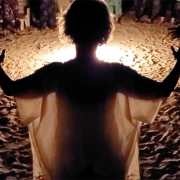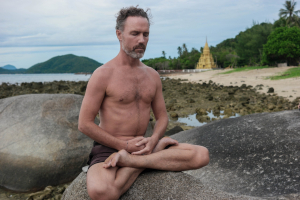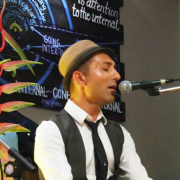 https://samahitaretreat.com/wp-content/uploads/2019/11/Beach-Fire-with-Daphne-Tse-and-Matthew-Cohen.jpg
491
1000
Daniel Stringer
http://samahitaretreat.com/wp-content/uploads/2024/01/samahita-logo-v2.svg
Daniel Stringer2019-11-26 00:00:002024-02-15 09:32:52Beach Fire with Daphne Tse and Matthew Cohen
https://samahitaretreat.com/wp-content/uploads/2019/11/Beach-Fire-with-Daphne-Tse-and-Matthew-Cohen.jpg
491
1000
Daniel Stringer
http://samahitaretreat.com/wp-content/uploads/2024/01/samahita-logo-v2.svg
Daniel Stringer2019-11-26 00:00:002024-02-15 09:32:52Beach Fire with Daphne Tse and Matthew CohenWhat is your state of mind? Perhaps yoga has some insight!
Is there an easy way to define yoga?
Will it be just as simple to explain yoga? This is more involved, though rewarding, read. Or skip through it by only reading the bolded parts.
On one level, a good grasp of any topic can be explained in a simple manner. True. Yet at the same time it is easy for the receiver to miss the nuances and take the simple as the full and accurate explanation.
Hence, on the other level, especially from those who gave their words to yoga over 500 years ago, yoga cannot be understood if not experienced, explaining it, even defining it can only mislead. True.
So both are true. Well, we need a working meaning and explanation. And this is possible. It may start simple but must continue to be unpacked. More interesting, the process of unpacking is (part of) the process of yoga.
What we then face is not just the polyvalence (many meanings and uses) of the word yoga (in Sanskrit) but when it is used specifically in relation to the inner process yoga is then both a state (as an outcome) and a process. in fact, the first sub-commentary on the Yoga Sutras noted “one knows yoga by yoga.”
Then there is the personalized definition of yoga and the modernized (for each generation and time) explanation of yoga. This is why we will mainly hear that yoga is doing “yoga” as āsana. On one level it is not entirely inaccurate, but it is a subset of yoga, with varying degrees of importance in how it (āsana) is weighted based on the individual.
It is easy to get sidetracked and even confused trying to figure this out. Which is why getting a good grasp of the original material and interpretation from those who have studied it well (typically scholars who also practice, but not exclusively) is a path to understand yoga better. It goes beyond what “I want yoga to mean for me,” such as happiness, compassion, being nice, breathing, an open body, and more. All these are important to life but are not the (sole) property of yoga and can arise through several modes of life. So the curious mind looks deeper, reads more, reflects, unpacks this material. And it takes time.
Then you may come across: yoga is union. Union of what? Oh, the universal soul (among other terms) and the individual soul. But this definition, most often used, comes up in the religious-oriented explanations of yoga. Which is fine and makes sense to many.
The other approach is yoga as integration. We live fractured lives. Our minds are agitated, meaning the mind state is not one of real harmony. There are moments but it is not steady and can get disturbed. Here yoga and meditation are synonymous. An integration of the disparate factors that make up a life that otherwise disturb, as the original commentary on classical yoga puts it, the “river of mind”.
Integration, meditation, is often related to the Sanskrit word of samadhi. Most of the yogic literature goes into these higher states of mind, the experience of samadhi. However, very few involved in yoga and the entire world of mediation has experienced samadhi. Of course if you give it a loose definition of a “concentrated mind” capable of deep introspection, perhaps trance, then many will claim it. But these, at best, are “bhāvana”, short-lived experiences. Not indicative of transformation. Yet positive.
Samadhi, therefore, as integration, gets at how well channeled the “river of mind” has become so that no external factor disturbs it. Those who have stabilized this still encounter the same onslaught of life’s challenges. Yet channeled is a natural state, one of peace, translated as calm to some, love to others, kindness and compassion to another group, clarity and strength to yet others, really all these combined with total integrity. This state endures through all experiences, whether we label them positive or negative. It does not mean everyone who interacts with one who has channeled the “river of mind” is pleased. It may mean the opposite at times because the recipient’s state of mind is still fickle and disturbed. Which is practically all of us, some more so, some less so.
So yoga as samadhi as integration is a transformed mind state, an ability to go deep within but more importantly to maintain that powerful current while in the world. Naturally, it is personal. And for many it is a far off (but not impossible) ideal.
Some may quote the Yoga Sutra and explain this as nirodha of the activity of the mind state. But nirodha is such a final experience that if it was the case then you wouldn’t be “here”. A working approach of a more practical nature, where integration takes place, and where the initial stages of samadhi begin and mature, is “ekāgra”, another Sanskrit word.
Ekāgra means one-pointed. Or channelled. Apply this to the flow of the “river of mind”. Mind has passed beyond the state of disturbance, agitation, moments of switching between calm and distracted or worse. In fact, this fickle and disturbed state of mind is more or less the state of mind of almost everyone practicing meditation, yoga, or any similar form of inner process. It is termed in Sanskrit as vikshipta (actual transliteration is viksipta).
We now find ourselves with a meaning and short explanation, yoga as the entire inner process where the flow of the “river of mind”, your mental state, integrates and transforms from vikshipta, being fickle and unreliable, to ekāgra, as clear and undisturbed, integrated. The same temptations and insults will come to both but the latter state is not swayed, tempted, or disturbed. The offense does not have any impact.
Some would consider this similar to, if not the same as, stoicism. And in a way there is very little difference.
But there is. Because how you approach the integration that channels the flow of the “river of mind” has given yoga its more conspicuous explanation and identification. Posture. Breath. Sitting meditation. Treatment of others. Handling of oneself. Yoga in practice and in life.
Now you “know yoga by yoga.” Meaning, if you do yoga mainly as poses or a mix of poses and breath (to keep it simple), then they are considered yoga when done in terms of how they affect the flow of the “river of mind”, to a more harmonious state, to ultimately complete channeling (ekāgra) and an eventual “not here anymore” (nirodha).
As noted in my own research we can see where the process of yoga plays out: “From viksipta to ekāgra is where identifiable and tangible effects of yogic-meditative practice can hypothetically be observed and measured,” (Dr. Paul D in “Breath, Stress and Health: a biocultural study of psycho-physical (hatha-rāja) yoga”).
Such a meaning and explanation is different to “yoga” today, but still you can do yoga today and find this. If you now understand WHY anything under the name of yoga (poses, breath, etc.) is done, it can change your whole approach. So the next time you do āsana, a yoga pose or set of poses, when done internally, attentively, with awareness on the state of mind, though working the body, it is actually meditation, it is actually a process of integration. It is yoga.
More from the Samahita Blog
Paul Dallaghan’s expertise with breathwork, body and meditative practices comes from three sources: over 25 years of daily dedicated practice and teaching these techniques; immersion in the original culture through one-on-one direct training in practice and study of ancient texts; doctoral scientific research at a leading US university (Emory) on yoga and breath in terms of stress, health and aging. Paul occupies a unique space to impart genuine teaching and science on these practices, acknowledged by his teacher and lineage (Kuvalayananda) in India as a Teacher-of-teachers and a Master of Breath, identified to carry the tradition (Pranayama). This places him as the only master-level yoga and breath practitioner currently immersed in scientific academic research on breathwork, stress and health. His sincere and ongoing role is to teach, write and research to help put out experienced and authentic information on these areas in a world full of confusion and conflicting messages both off and online.
For more on his background see his bio.




